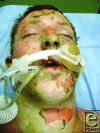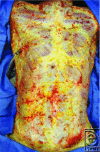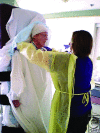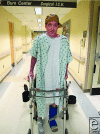Cody
Abstract
Advances in burn management over the past 2 decades have resulted in improved survival and reduced morbidity. The treatment of a single patient following a 90% total body surface area injury illustrates the intensity of labour and coordinated hospital care required for such catastrophically injured patients. Data were extracted from the medical records and from personal recollections of the individual members of the multidisciplinary team as well as from the patient. The clinical course and management of complications are described chronologically as a series of overlapping phases from admission to discharge.
Keywords: burns; psychosocial; rehabilitation; resuscitation.
Figures




























References
-
- Mlcak RP, Suman OE, Herndon DN. Respiratory management of inhalation injury. Burns. 2007;33:2–13. - PubMed
-
- Weaver LK, Howe S, Hopkins R, et al. Carboxyhemoglobin half-life in carbon monoxide poisoned patients treated with 100% oxygen at atmospheric pressure. Chest. 2000;117:801–8. - PubMed
-
- Demling RH. The burn edema process: current concepts. J Burn Care Res. 2005;26:207–27. - PubMed
-
- Baxter CR, Shires T. Physiological response to crystalloid resuscitation of severe burns. Ann Surg. 1952;135:804–94. - PubMed
LinkOut - more resources
Full Text Sources
Miscellaneous
